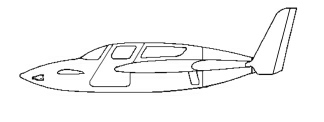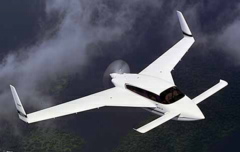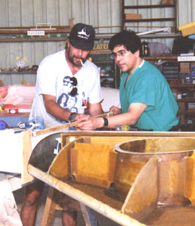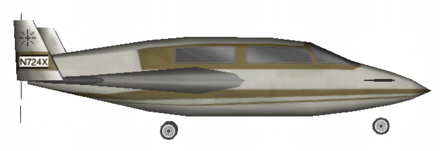[Home] [Project Overview] [ Velocity XL RG Specs ] [N724X Slide Show] [Build Timeline] [ Velocity Links ]
[ GUESTBOOK ][ Rich Guerra's Home Page ]
If you don't see a list of sections to the left, click here
[Home] [Project Overview] [ Velocity XL RG Specs ] [N724X Slide Show] [Build Timeline] [ Velocity Links ]
[ GUESTBOOK ][ Rich Guerra's Home Page ]
If you don't see a list of sections to the left, click here
PROJECT OVERVIEW
| What is it? | ||||||||||||||||||||||||||||||||||||||||||||||||||||||||
 |
||||||||||||||||||||||||||||||||||||||||||||||||||||||||
|
I remember it was with some trepidation I began my conversation with my mother to tell her of my decision to build an airplane. You see, she tends to worry - a lot - you know the type. Accordingly, this situation had to be handled with the utmost delicacy. My mother, a non-pilot, listened without comment to my description of a strange looking fiberglass aircraft with 'a little wing in front and the propeller on the back'. I was ready with a thousand reassurances about the project: an over-engineered design, unique stall characteristics, a good track record. You know, the works - everything just about every builder has to say to dubious spouses, family or friends.
|
||||||||||||||||||||||||||||||||||||||||||||||||||||||||
|
Drawing courtesy of Malcolm Collier of Hangar 18
(click for a larger version) |
||||||||||||||||||||||||||||||||||||||||||||||||||||||||
But before I could launch into my well-thought out, cogent arguments, she interrupted: "Oh, you mean a canard style, pusher configuration, high performance composite experimental aircraft?" "?!?!?" was all I could muster for a time. "Say What?!" I finally sputterd. "You know, like a Long-EZ. Only this one sounds bigger. Is it a 4-place?" |
||||||||||||||||||||||||||||||||||||||||||||||||||||||||
| Well, as a matter of fact .... Turns out Mom was doing some flying with my uncle, Dave Palacios, an A&P in Corona, California, and had spent some time examining a few canards at airports they had visited. She thought the idea was pretty cool and wanted to know when she could get a ride.
Well, the family support hurdle passed, the business of building a plane began. The choice of the Velocity was an easy one after some thought on the 'mission parameters' along with the various reasons for flying. In addition to supplying challenge, adventure, access to spectacular beauty and a unique perspective of the world not available from the ground, an airplane dramatically expands one's ability to travel. Now, if a place is more than an hour's drive away, it automatically becomes a candidate for a visit by air. After learning to fly at GreenCastle Aeroclub, I've taken advantage of club planes to visit family and friends in the Midwest and the South. But what about the folks on the East and West coasts? |
||||||||||||||||||||||||||||||||||||||||||||||||||||||||
 |
||||||||||||||||||||||||||||||||||||||||||||||||||||||||
My day job has lead me to the center of the country, in Iowa City, IA, far from most family and friends. In other words, as nice as it is here, I'm not exactly on the beaten path. And increasingly lately, whenever I find myself stranded at some airport at the whim of the airlines, the point that I often could have flown myself more convieniently and more quickly is hammered home. Of course, I wouldn't get those little bags of pretzels, but then again, I hate them anyway! Therefore, I needed a plane that would be fast, reliable, a good IFR platform and comfortable for use for regular near-transcontinental flights. Given I was going the experimental route, this clearly narrowed the field of choices considerably. A plane like a Velocity would make virtually anywhere in the country a day trip away. And when you factor in the proven track record of the airplane and the superb support offered by the Velocity factory and others with the aesthetics and practicality of the bird, the decision became easy. |
||||||||||||||||||||||||||||||||||||||||||||||||||||||||
The Velocity is offered as a kit, with "fast-build" options available to speed up the building process. However, after long and hard soul-searching on the reality of my schedule, I came to the insescapable conclusion that I was unlikely to ever complete even a partially built plane, at least not in the next decade. I needed help. I spent a lot of time asking around, reading thousands of Velocity Builders mailing list messages, etc. From all of this a consistent picture of excellence and superb workmanship emerged of Malcolm Collier and his crew at Hangar 18. Spending a day at Hangar 18 confirmed my intial impressions and, after a thoroughly enjoyable day at a Velocity Open House, I plunked down for a kit. The kit was delivered to Hangar 18 in September 2000 and work began. The build process is detailed in the pages to follow. I sneak away from work as often as I can to journey to Florida to join Malcolm (who has been a wonderful mentor) and his crew in working on the plane, in particular to be involved in all major structural construction. The pages following document the various stages of construction and are arranged roughly chronologically. |
||||||||||||||||||||||||||||||||||||||||||||||||||||||||
 |
||||||||||||||||||||||||||||||||||||||||||||||||||||||||
What can it do? |
||||||||||||||||||||||||||||||||||||||||||||||||||||||||
| The Velocity family of planes are all extremely capable. Full details can be found on the Velocity web site but I've excerpted some of the specs below. | ||||||||||||||||||||||||||||||||||||||||||||||||||||||||
|
||||||||||||||||||||||||||||||||||||||||||||||||||||||||
|
||||||||||||||||||||||||||||||||||||||||||||||||||||||||
| N724X was modified from factory plans. One change includes expanding the size of the fuel tanks. By reducing the width of the strake baggage area, the fuel capacity was increased to 82 gallons. There are multiple further tweaks made on the plans which are detailed in the pages to follow. | ||||||||||||||||||||||||||||||||||||||||||||||||||||||||
 |
||||||||||||||||||||||||||||||||||||||||||||||||||||||||
|
|
||||||||||||||||||||||||||||||||||||||||||||||||||||||||
 |
||||||||||||||||||||||||||||||||||||||||||||||||||||||||
| Comments, questions, and suggestions are welcome! email: rich@rguerra.com. |
||||||||||||||||||||||||||||||||||||||||||||||||||||||||